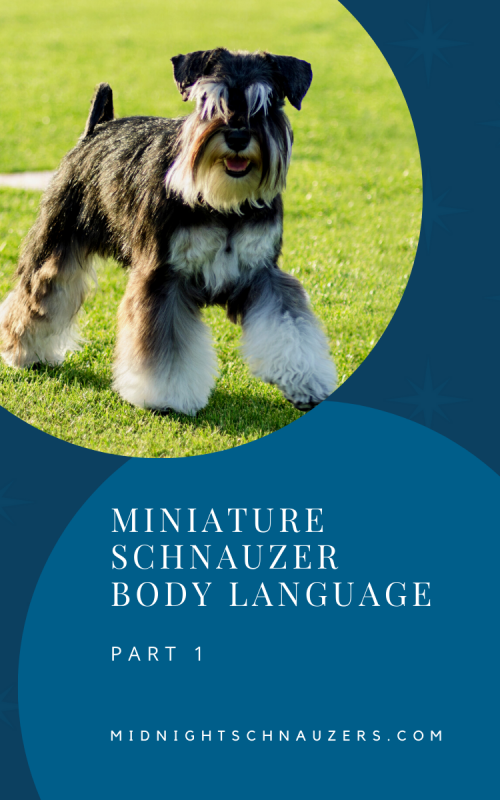77% of dog bites to children are from their own dog or a friend’s dog. How do we stop this? By learning dog body language so we know when a dog is happy and when he’s not. If we know when to intervene in everyday situations, we can keep our kids and their furry pals safe. Today in Schnauzer U, we’ll go over how to tell when a dog is happy and enjoying the interaction. There are certain body parts that we need to pay special attention to.
Note: Even if you don’t have children yourself, you’re going to encounter them with your dog at some point. Body language is also a great way to tell how your dog is feeling about absolutely anything or anyone they encounter. So even if there’s not a kid on your horizon, keep reading!

1. Eyes: soft and sometimes squinty
Just like with people, you can usually take one look into their eyes and tell if they’re happy or not. You want your dog’s eyes to be soft, relaxed, and liquid brown.
2. Ears: relaxed and floppy
When a dog is relaxed and happy, his ears will be in their natural position, loose and floppy – unless you have a Husky that is! Know what your dog’s normal ear position is, and watch for any variation.
3. Mouth: open in a goofy grin
Like us, dogs smile when they’re happy! This is one of the easiest ways to spot a happy dog. The mouth will be open with no tension in the face.
4. Body: relaxed and turned towards the person
If a dog is enjoying an interaction, he will always come back for more. He’ll turn toward the person (or dog, or whatever it is), and maybe lean into them.
5. Tail: loose and waggy
Believe it or not, a wagging tail isn’t always a sign of a happy dog. But if the tail is held fairly low and wagging loosely, the dog is probably happy. The most important thing is to look at the whole body, not just the tail.
A happy dog will always show most, if not all of these signs. If they don’t, you know something in the situation needs to change.
To see all of this in action, check out this brilliant video from The Family Dog.
To learn more about how to tell if a dog is NOT happy, read Part 2 of this series.


